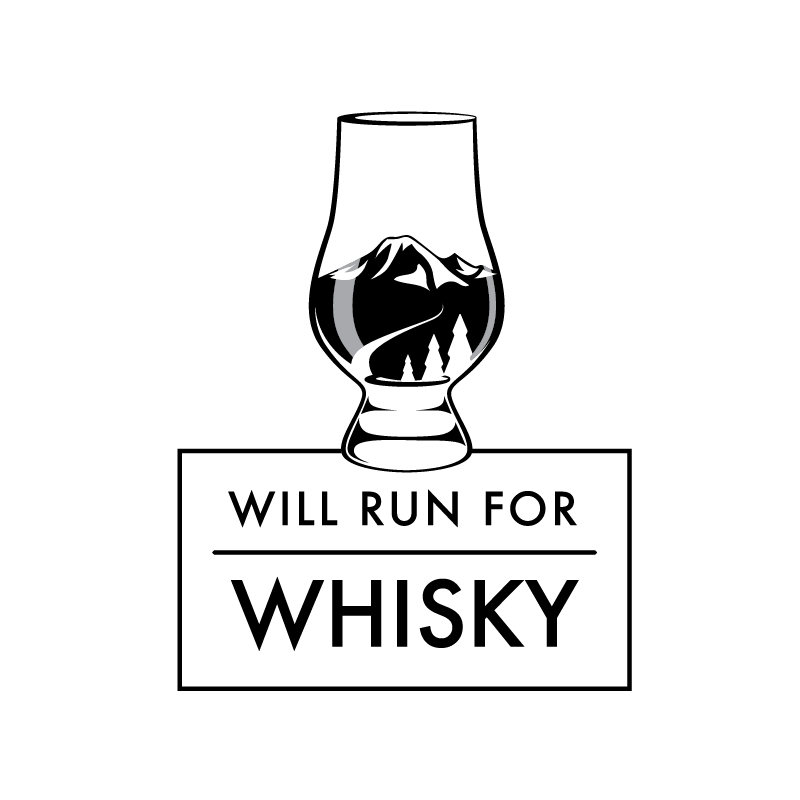Scotland – Whisky Tour (Part 2)

Our whisky tour – continued! (If you missed part 1, it can be found here.)
Just to give you an idea of where the distilleries are located in this part two of our whisky tour, here is an interactive map of the distilleries listed in this post:
All of these distilleries were part of the fantastic Rabbie’s Islay and the Whisky Coast Tour. While the first distillery tours/visits on our own were really fun, the Islay ones were even better. We got even more in-depth distillery tours (that I’m sure had to do with us being a part of the Rabbie’s tour group), and it was fantastic!
So, to continue…

Kilchoman Distillery – Islay region
This was probably my favorite distillery. It was also the youngest by far – the first distillery to be built on Islay in 124 years. Unlike every other distillery on Islay, they are on a farm and completely landlocked. All of the other distilleries are located on the coast. Kilchoman is unique because they grow some of the barley themselves (for an expression called 100% Islay). It’s important to note that Islay does not have the most ideal conditions for growing barley – most distilleries bring it in from mainland Scotland or England. Additionally, they malt some of their barley (the rest arrives already malted), so it was our first time seeing a malting floor, kiln, and hearing about the process in person. This was the first distillery that offered us some of the wash to taste (fermented wort, like a cloudy beer of around 7-9% ABV). We also got to try some new make spirit, straight from the still (it was still warm), at around 70% ABV. It was wonderful – fragrant, light, fruity and sweet.

Kilchoman is also notable because they do all of their bottling at the distillery, and by hand. It was incredible to see, and makes you appreciate the finished product even more!
Here we sampled three of their expressions, and fell in love with their Madeira Cask Matured whisky and bought it on the spot. Currently, it’s only available at the distillery, so we were lucky to get a bottle.
What difference did I notice in Kilchoman’s process? So many things! Growing and malting their own barley is rather unique. Also, they ferment for 95 hours (on the longer end of the common range of fermentation), and their stills were specially designed to create a lighter, more delicate spirit. This delicate spirit was designed as such so it wouldn’t have to mature as long, and be ready for sale sooner than most (which is likely why there are no age statements on their bottles.) However, please note that in Scotland, the spirit must be matured for at least three years before it can be called whisky. Something to consider – if Kilchoman’s whisky is this good now, how good will it be with 10+ years of maturation?
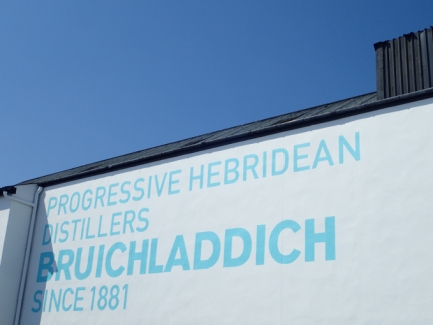
Bruichladdich Distillery – Islay region
We only had a tasting here, but it was still fun to visit. They call themselves “Progressive Hebridean Distillers,” and I wouldn’t argue that fact. It seems like they have a new expression at every turn, and they aren’t afraid to play around and try new flavors. A nice contrast to the focus on tradition at many distilleries.

Here we tried three of their expressions – one from each of their lines: Bruichladdich (unpeated), Port Charlotte (heavily peated), and Octomore (super heavily peated). Their latest Octomore expression (7.2), was made with the most heavily peated barley in the world. This expression’s phenol level was at 208 ppm (parts per million) which is well beyond the level of most whiskies. For a contrast, Ardbeg is generally between 55 and 65 ppm, and Lagavulin and Laphroaig between 40 and 50 ppm. I expected the Octomore to taste like licking a campfire, but it didn’t! It was surprisingly smooth and pleasant, but still smoky. Our entire group was surprised at how drinkable it was, so we asked the staff about it. Here’s the difference – they use peat from Inverness (on the mainland) instead of from Islay to impart the flavor. It’s milder, so it won’t have the strong Islay taste (but evidently can still jack up the ppm without making it undrinkable.) An interesting experiment (marketing ploy?), in my opinion.
What difference did I notice in Bruichladdich’s process? Since we didn’t go on a tour and see their stills or process, I’ll say their constant experimentation with expressions!
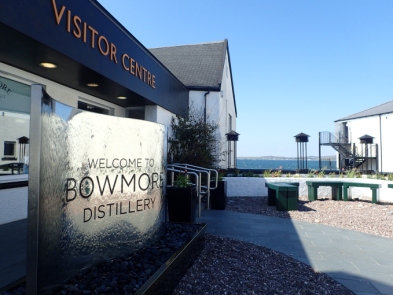
Bowmore Distillery – Islay region
This was another great tour that showed us a malting floor in use. I even got a chance to turn some of the barley with their special rake. Bowmore malts about 40% of the barley it uses to make whisky. Something to note as well – their peat is cut by machine. That may seem like an odd comment to make, but that varies by distillery (that does their own malting).
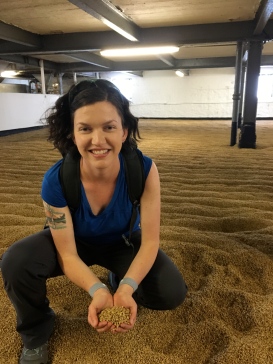
What struck us as odd was that we were allowed to walk on the barley on the malting floor. No shoe covers, nothing. The tour guide even invited us to make “barley-angels.” However, this grain is later heated, yeast is added and it’s boiled. No room for bacteria to move in, but it still was a bit shocking to us Americans who are used to a much more sterilized environment for consumable products. No judgement on my part, and it just adds to the character, I’m sure. 😉
We tried three of their expressions – all ones we hadn’t had before (many were duty-free exclusives). We also saw a very expensive bottle on display – a 54 year old whisky! There were 12 bottles from this cask, and one was sold for roughly $155,000. Wow.

What difference did I notice in Bowmore’s process? Malting their own barley is somewhat unique, of course. They ferment for two days (on the shorter end), and their stills were huge.

Ardbeg Distillery – Islay region
The first of the three peat monsters! This was another really great tour. No maltings here, but we did get to taste their peated barley. It tasted just like you’d expect – very smoky. We also got to try the wash from a washback, as well as new make spirit straight from the still. Quite a contrast to Kilchoman’s, I must say. Kilchoman’s new make had a lighter, more fruity flavor while the Ardbeg had a smokier and mustier flavor.
Something unique that we saw at Ardbeg was the disgorging (emptying) of casks. They had some 10-year old that was ready to be taken out of the casks and bottled. They take out the bungs, roll the casks over and the whisky pours into a trough in the floor, and off to a tank. One of the distillery workers pulled some of the whisky straight from a cask, and let us try it. 10 year old whisky that no one had yet sampled! There were still flecks of the barrel char in it. A cool (and tasty) experience, for sure.

Here we sampled five of their expressions in increasing ABV strength (and I’m so glad Adam and I shared or I would have been completely smashed before lunchtime.) The tasting was held in a cozy, dark room that was like a whisky vault.
What difference did I notice in Ardbeg’s process? They have a purifier on their still to increase reflux for a lighter spirit.

Lagavulin Distillery – Islay region
Just a tasting with paired chocolate at this distillery! It was unfortunate that they don’t allow visitors to walk their grounds (unless you’re on a tour) and enjoy the coastline. It was all gated, which was quite different from the other distilleries we’d visited thus far. Their shop is small (they only have a few expressions), but their little tasting room was a decent size and very quaint.
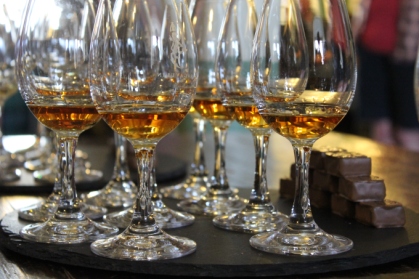
The chocolate that they paired with the three expressions were delicious and handmade in Edinburgh, I believe. I’m afraid I don’t remember the exact pairing (blame the Ardbeg tasting), but it included one that was cinnamon, one that was mocha, and the last was just dark chocolate. It all tasted delightful together with the smoky, rich whisky.
What difference did I notice in Lagavulin’s process? No time for a tour, but I do know they have a descending lyne arm on their still, which means less reflux and therefore a heavier spirit.
Laphroaig Distillery – Islay region
Our final distillery visit/tour! One thing that really struck me when we arrived at the distillery was this wall along the sidewalk that had quotes on tiles from fans of Laphroaig, shared on Twitter with the #opinionswelcome. The quotes were hilarious, and I got a kick out of the fact that Laphroaig is thriving on these blunt and funny comments on their unique (and sometimes challenging) flavor. My favorite? “The salty kiss of a drunken sea captain, followed by a right hook full of burnt dirt, washed off with antiseptic liquid.” Accurate, in my opinion…and awesome.
This tour really just focused on what makes a Laphroaig a Laphroaig – the peat. We saw their malting floor, their kiln, and we were allowed to toss some peat in the kiln and stick our hands inside (just barely warm inside actually). Like the other distilleries with a malting floor, they only malt part of the barley they use (~25%), the rest they receive malted from Port Ellen Maltings – just down the road. Our guide also had us try some germinated (but unmalted) barley, which tasted just like green bananas. Then we tried the malted barley, which knocked your socks off with the peatiness.
We drove by the peat bogs that Laphroaig uses on our way to the distilleries. They hand-cut their peat, which is different than Bowmore. Does it make a difference? I’m sure some would say it does. 🙂

Beautiful view from the distillery grounds
What difference did I notice in Laphroaig’s process? Their malting process is a bit different and definitely infuses a unique flavor into the barley. The lyne arms on their stills are ascending, so remarkably, it creates a lighter, less heavy spirit.
The other fun yet rather touristy thing we did here was sign up to be a Friend of Laphroaig. You get a lifetime lease on a square foot of land (and get to plant your country’s flag in in the ground). Whenever you do come back to the distillery, once a year they’ll give you a mini bottle to take home with you. One of the many things to look forward to whenever we go back!
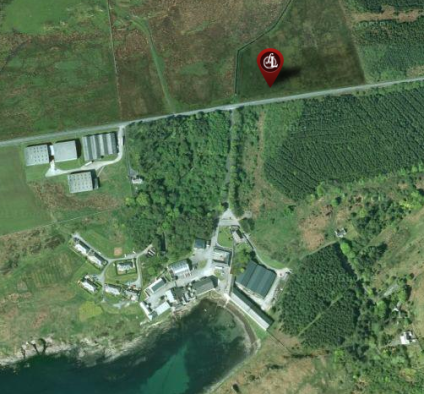
So, what was my overall takeaway from all of these distillery visits?
I can’t stress this enough – all of this was incredibly fascinating to me. The overall whisky-making process is basically the same at each distillery, however, each tour offered a remarkable glimpse into what they do differently from each other. Collectively, this really gave us insight into what affects the character of the spirit and how they achieve their particular flavors.
It was interesting how most of the distilleries had some special aspect of their still to increase reflux to create a lighter spirit. However, of the stills we saw, none had the same adaptation to achieve this. Of course, if a spirit is too “clean” it wouldn’t have many interesting flavors at all. So like people, it’s the quirks that make us special, right? 😉
I also noticed that on most of our tours, they heavily emphasized tradition. “We’ve always done it this way,” or “some distilleries do xyz, but we still follow the old way of doing things.” That tradition has created the flavor profile that is their identity, so they can’t fiddle around with it too much, but I still found it interesting how much they highlighted that fact.
While it may be a very American attitude, I find a distillery far more intriguing if they try new things, play around with flavors and have a variety of expressions. Some only have two or three expressions, which is fine, but really, where’s the fun in that? (Yes, I realize that they are businesses and it’s not for “fun”, but still.) Maybe it’s because I live in Seattle, but I believe innovation is important. It demonstrates flexibility and adaptability, which is important for long-term sustainability. It doesn’t necessarily mean you ditch the classics that are your bread and butter, but just that you keep an open mind and be willing to try different things. For example, many distilleries are trying new cask finishes. It may have stemmed from the lack of sherry (or any) casks available in the industry, but need begets creativity, and it’s creating some wonderfully tasty results. Experiments like that are certainly a way to keep customers, like myself, interested and coming back for more.
Lastly, now that we’ve seen the distilleries, the land, the climate, and met the people, I believe that the terroir of the place very much impacts the flavor of the whisky. This opinion is a bit controversial in the world of distilled spirits, but after our experiences in Scotland, I think it’s one more important factor in whisky making.
All in all, seeing the whisky-making process up close was incredible. It is art and science all rolled up in one, and I have an even greater appreciation for a dram after seeing the whisky being made. While I know much more than I did before we went, this trip has only intensified my desire to learn more details about whisky-making, and increased my interest in exploring other distilleries.
So…10 distilleries visited, and only 100+ in Scotland to go. Best get to it! 🙂
